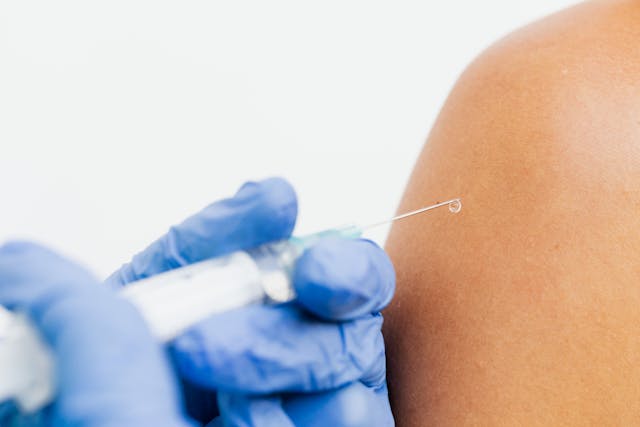
Hemodialysis Catheters Market Development, Trends, Segmentations Analysis
Hemodialysis is a life-saving intervention for patients with end-stage renal disease (ESRD). Patients with renal disease are affected by progressive loss in the liver functioning. It eventually becomes necessary for the patient to opt for dialysis treatment to sustain healthy life. ESRD is generally the end stage of chronic kidney disease (CKD), which has high prevalence worldwide. Hemodialysis is an alternative for numerous vital functions of kidneys. The dialysis machine itself is termed to be as an artificial kidney. It is generally used for removal of excess content of water and waste products or impurities from kidneys to filter patient’s blood when kidneys are damaged or dysfunctional. The dialysis machine brings about filtration of blood using a dialyzer, while removal of the blood (containing impurities or waste products) and returning of the filtered blood to the patient is brought about by surgical vascular access.
Request a PDF Brochure – https://www.transparencymarketresearch.com/sample/sample.php?flag=B&rep_id=22922
Vascular access for the hemodialysis process is gained through an arteriovenous (AV) fistula, arteriovenous (AV) graft, or dialysis catheter (TDC). AV fistulas and AV grafts are designed for long-term use, while dialysis catheters are designed for short-time use. There exist two types of dialysis catheters: tunneled and non-tunneled dialysis catheters. Non-tunneled catheters may be cuffed or non-cuffed. Hemodialysis catheter is a soft tube inserted into a vein either in the neck, chest, or leg (close to groin). It is divided into two after the tube exits the body. Vascular access is of importance to the treatment. It is likely to be vulnerable to infections and clotting of blood, which are generally the leading cause of catheter dysfunction. A majority of hemodialysis catheters are inserted and fixed onto the anterior chest wall when the patient holds a supine position. Also, according to NKF-KDOQI (National Kidney Foundation – Kidney Disease Outcomes Quality Initiative), the most preferred vascular access site is the right internal jugular vein (RIJV) when the tunneled central venous catheter is used. Other vascular access options include left internal jugular vein, femoral vein, external jugular vein, subclavian vein, transhepatic accesses, and translumbar accesses.
Hemodialysis catheters are designed to meet the clinical requirements of hemodialysis, infusion, apheresis, and monitoring of central venous pressure as well as high-pressure contrast injection patients. An ideal hemodialysis catheter maintains the blood flow rate of about 400 ml/min for minimum 3 hours. As per several clinical studies, the performance and durability of hemodialysis catheters are improved upon proper positioning of the catheter tip within the right atrium. The tip direction, degree, and position of a hemodialysis catheter are influenced also by the type of catheter, its insertion site, and body movement and habitus of the patient. Based on type of tip, hemodialysis catheters are of three types: symmetric catheters, split-tip catheters, and step-tip catheters.
Request for Analysis of COVID19 Impact on Hemodialysis Catheters Market – https://www.transparencymarketresearch.com/sample/sample.php?flag=covid19&rep_id=22922
Rising prevalence of CKD and related risk factors such as cardiovascular diseases, diabetes, and hypertension are major factors driving the global hemodialysis catheters market. As estimated by the American Kidney Fund–2015 kidney disease statistics, more than 31 million population of the U.S. i.e. 10% of the adult population of the country suffers from chronic kidney diseases. Chances of having CKD increase with the age. The organization also estimated that diabetes and hypertension are responsible for 44% and 28.4% of all the new cases of kidney failures, respectively. Also, unavailability of kidney donors for transplantation increases the demand for hemodialysis amongst CKD patients all over the world. This, in turn, propels the market for hemodialysis catheters.
A major driver for the hemodialysis catheters market is awareness about blood infections (BSI) worldwide. Health care-associated blood stream infections are primarily caused by the insertion of intravascular devices, particularly catheters. This drives the market for hemodialysis catheters. A major restraint for the hemodialysis catheters market is blood infections and thrombosis. The key reason for mortality in ESRD patients is infection, while the major risk factor for infection is inevitable use of vascular devices in hemodialysis. In order to overcome thrombosis caused by catheters, there has been a trend of using carbothane- or polyurethane-based catheters, which have better strength and softness in comparison to silicone. In addition to this, surfaces of catheters are coated with antimicrobials and anti-thrombogenics for preventing infection and thrombosis, respectively.
Pre-Book Hemodialysis Catheters Market Report – https://www.transparencymarketresearch.com/checkout.php?rep_id=22922<ype=S
The hemodialysis catheters market has been segmented by product, use of material, tip configuration, end user, and region. Based on product, the hemodialysis catheters market has been segmented into tunneled and non-tunneled catheters, while the tunneled catheters segment is sub-segmented into cuffed and non-cuffed catheters. Based on use of material, the hemodialysis catheters market has been classified into silicone, carbothane, and polyurethane. Based on configuration of the catheter tip, the market has been divided into step-tip catheters, split-tip catheters, and symmetric catheters. The end users of hemodialysis catheters are dialysis centers, hospitals, homecare settings, and others. Based on region, the hemodialysis catheters market has been segmented into Asia Pacific (APAC), Europe, Middle East & Africa (MEA), North America (NA), and Latin America (LA).
Major players operating in the global hemodialysis catheters market include Fresenius Medical Care AG & Co. KGaA, NIKKISO CO., LTD B. Braun Melsungen AG, and NIPRO Medical Corporation. Other players in this market are Toray Medical Co., Ltd., Baxter International Inc., Asahi Kasei Medical Co., Ltd., NxStage Medical, Inc., Shenzhen Landwind Industry Co., Ltd., Outset Medical, Inc. and ALLMED MEDICAL CORP.
About Us
“Transparency Market Research is a next-generation market intelligence provider, offering fact-based solutions to business leaders, consultants, and strategy professionals.
Our reports are single-point solutions for businesses to grow, evolve, and mature. Our real-time data collection methods along with ability to track more than one million high growth niche products are aligned with your aims. The detailed and proprietary statistical models used by our analysts offer insights for making right decision in the shortest span of time. For organizations that require specific but comprehensive information we offer customized solutions through adhoc reports. These requests are delivered with the perfect combination of right sense of fact-oriented problem solving methodologies and leveraging existing data repositories.
TMR believes that unison of solutions for clients-specific problems with right methodology of research is the key to help enterprises reach right decision.”
Contact
Transparency Market Research
State Tower,
90 State Street,
Suite 700,
Albany NY – 12207
United States
USA – Canada Toll Free: 866-552-3453
Website: https://www.transparencymarketresearch.com
Read More Reports: https://www.prnewswire.com/news-releases/quality-healthcare-at-affordable-prices-to-propel-urgent-care-centers-market-forward-tmr-study-301092870.html


